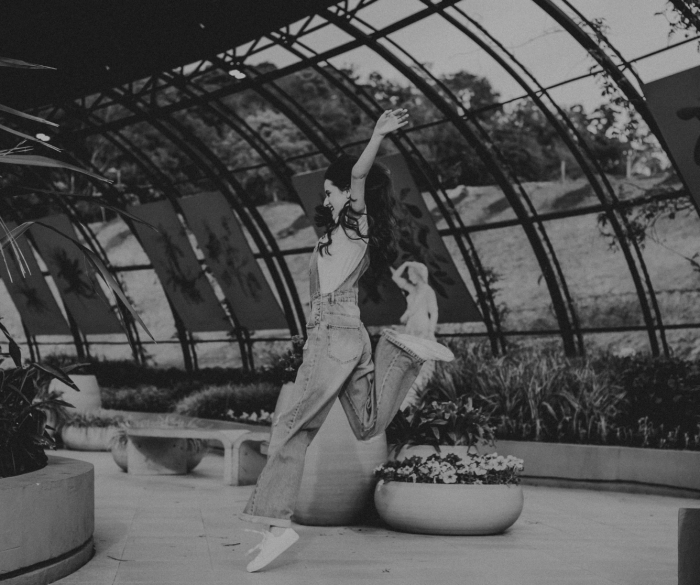How do you define happiness?
Is there an abundance of it in your life, or does it seem like, given all you have, you should probably be feeling it a little bit more?
Something surprising about human brains is that they are built to seek safety—not happiness. That means we don’t like change, or at least a big part of us doesn’t. Which is why, even when the familiar keeps us trapped in toxic behaviors, thoughts, or relationships, we are often loathe to challenge it.
There is another part of us, however, that has evolved to problem solve and seek growth and opportunity. These two selves exist in stark contradiction to one another: the self who wants to be small and safe no matter what the cost, and the self who senses that things could be better, that we could be better—living richer, more dimensional, and more satisfying lives.
So what is happiness? There are as many different answers to that question as there have been philosophers to argue their cases, but for me, happiness is the sweet spot between feeling safe and achieving personal growth. Each person’s sweet spot is unique. For some, suddenly deciding to move to a foreign country for a year feels challenging but not overwhelming, but for others, smaller challenges like deciding to journal daily for a year (and actually doing it) can feel, and ultimately be, enormous game changers.
Hard facts: we don’t grow if we don’t allow ourselves to be uncomfortable, and we can’t be happy if we don’t grow. When we feel stuck, it is wise to reflect on what we are afraid of. It is a sign that we are choosing comfort over evolution. And it is a chance to push ourselves in new ways and see what happens.
Here are four ideas to get you moving toward your idea of happiness right now:
1. Separate feelings from facts.
Just because we feel a certain way about something doesn’t make it true. Feelings change, but the truth remains. When we are overwhelmed by emotions, it’s unlikely that we’re able to assess anything with accuracy. At the same time, feelings deliver extremely important information about what we think we deserve and what we expect to be true (rather than what is true).
It’s always good to feel our feelings, but it’s also good to recognize them for what they most often are: impressions from the past that create a filter through which we see the present. Like a storm rolling through on a hot summer day, they come and go and have lots of energy and impact, but they don’t change the blue sky above them in the least.
To work on differentiating between facts and feelings we can ask ourselves: How do I bring my own beliefs, history, and preconceived ideas to the present situation? If I were to have walked into this situation for the first time right now, with no past through which to judge it, how would it look different?
Asking questions such as these in the midst of a tough moment will be difficult because when we are feeling deeply, we are thinking superficially. To bridge the gap between thought and feeling, we can first let the storm roll through us, and then, get grounded in mindfulness so we can begin to observe our emotions. Attend to the sensations in the body; is the heart racing, are you hot, cold, trembling, disassociated? When the intensity of these sensations begins to subside, try to take on the role of an uninvolved bystander. How does the situation look different now?
2. Look at problems as opportunities.
In life, every time that we have changed for the better it is because we were faced with a problem we needed to solve. Without problems, we would never bother to get off the couch. In this sense, every single problem—and I do mean every single one—is an opportunity to become a more fully realized version of ourselves.
Think back on all the times you faced something scary, and how creative and inventive you were forced to be to face or work around your fear, as well as how much you learned after it was over. It is continually engaging in this process over a lifetime that hammers us into our final form. If we choose to interpret it as the blessing that it is, gratitude, rather than resentment, has a chance to take root.
3. Talk to your Future Self.
Your Past Self holds all of your heartache and unhealed wounds, but your Future Self has all the answers.
You may have heard people talk about “shadow work” which is the idea of excavating and healing the hurt and hidden self of the past. It is powerful stuff, and the premise of a great deal of modern-day talk therapy. And as much as I love it, there is room for our Future Selves in therapeutic work as well.
Future Self work is a lot easier than shadow work, and much more fun. All we have to do is imagine our future selves in as much detail as possible: what age we are, where we are logistically, what we are wearing, and then ask that self a question our present self is struggling with. Generally, the response comes to us as clear and confident as a bell.
4. Contemplate death.
As Brianna Wiest says in in her book 101 Essays that Will Change the Way You Think, “Put a skull on your desk if you have to.”
It may seem counterintuitive for someone to advise the contemplation of death as a means to greater happiness, but this practice helps us tune in to a sense of gratitude for what we have, and for what we will inevitably lose. Though it often doesn’t seem like it, we have a limited number of days on this good earth, and staying in touch with that helps us appreciate them a lot more.
We can ask ourselves, what legacy do I want to leave behind? What are the small precious things I should be paying attention to right now? When I am gone, what will the world have lost? When I am gone, what will I have lost?
The way we choose to look at things is powerful, and it is up to us to find new perspectives if our current ones are not serving us. This can make us feel shaky and disoriented. It’s okay to go slow. But we need to keep showing up for this abstract exercise called life and pull from it all the love, all the beauty, and all the dark twisted messiness and flavor that it has to give.
~









Read 5 comments and reply